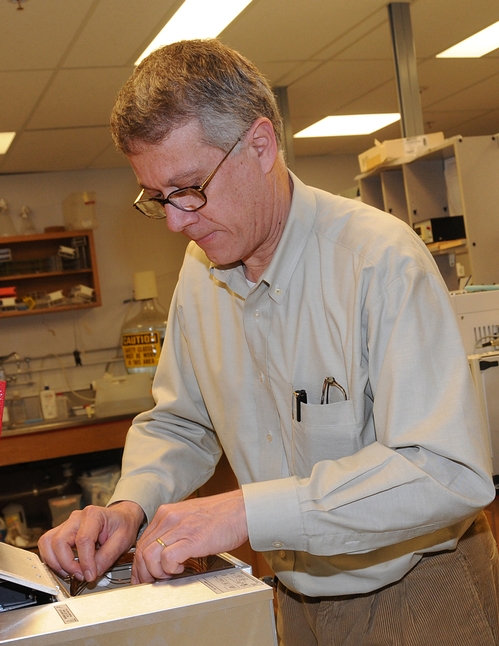- Author: Kathy Keatley Garvey
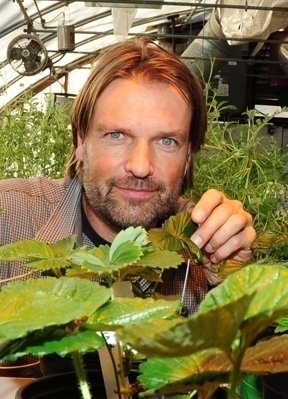
The brown planthopper, Nilaparvata lugens, or BPH, is the economically most important rice pest in Asia. It's found only in southeast Asia and Australia, but the methods that a nine-member research team used may be appropriate here in the rice-growing areas of California, says UC Davis agricultural entomologist Christian Nansen, who was part of a nine-member team that just published first-of-its-kind research. It appears in Scientific Reports of the journal Nature.
Using the sustainable pest management method known as "the banker plant system," they did field and laboratory work in China with good results: attracting alternative hosts to parasitoids of rice insect pests, can help protect a rice crop. The players: a grass species, a planthopper, and an egg parasitoid.
Research results showed that BPH densities were significantly lower in the rice fields with the sustainable pest management practice known as the banker plant system compared to control rice fields without the banker plant system, the scientists said.
“Many people are familiar with the concept of a ‘trap crop'-- a sacrificial crop which is planted mixed in with or adjacent to an economically important crop and the trap crop serves to manipulate pests away by offering them a more attractive/suitable host alternative,” said Nansen, an assistant professor with the UC Davis Department of Entomology and Nematology. “The use of banker plants in pest management is similar to the use of trap crops, but banker plants typically have multiple ecological functions.”
The researchers planted a grass species, Leersia sayanuka, next to rice. It attracted a planthopper (Nilaparvata muiri), which does not infest rice.
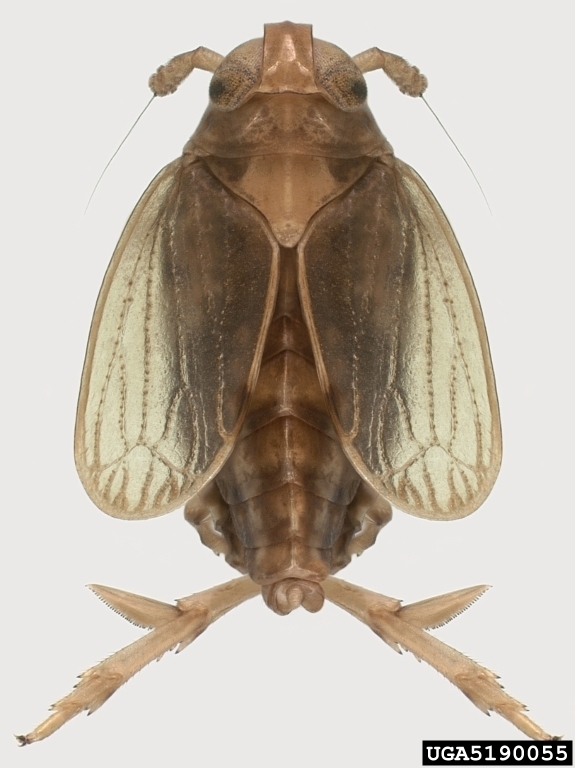
Rice is the stable food of more than 50 percent of the global population, and 60 percent of the Chinese population. However, scientists concur that the world's rice production needs to increase drastically over the next three decades to meet the growing food demand in Asia. Growing concern over BPH outbreaks and higher pesticide usage led to the sustainable pest management study.
Titled “Use of Banker Plant System for Sustainable Management of the Most Important Insect Pest in Rice Fields in China,” the research is unique in that it is the first published study describing the attraction of alternative hosts to parasitoids of rice insect pests. In rice systems, previously published research involved planting sesame as a nectar source to promote the establishment and persistence of a predatory bug; and studies involving parasitoids.
BPH feeds on the rice crop at all stages of plant growth and can also transmit two viruses, rice ragged stunt virus, and rice grassy stunt virus. Damage can commonly result in a 60 percent yield loss. An infestation is often called “hopper burn,” referring to yellow patches that soon turn brown.
Noting the importance of the banker plant system, Nansen said that banker plants “involve promotion of plant diversity to enhance pest self-regulatory ecosystem functions, such as predation and competition, to reduce susceptibility of agricultural crops to native and invasive pests. Also, banker plants “may provide resources, such as shelter, pollen and nectar or alternative preys to improve the establishment and persistence of beneficial insect populations used to control a specific pest.” The first successful banker plant system, developed in 1977, involved tomato as the banker plant, a parasitoid and a whitefly.
Nansen is affiliated with both UC Davis and the Zhejiang Sustainable Pest and Disease Control, Institute of Plant Protection and Microbiology, Zhejiang Academy of Agricultural Sciences, Hangzhou, China.
Co-authors of the research paper include lead author Zhongxian Lu and colleagues Xusong Zheng, Yanhui Lu, Junce Tian, Hongxing Xu, all of the Zhejiang Sustainable Pest and Disease Control; and Pingyang Zhu, Facheng Zhang and Guihua Chen of the Jinhua (China) Plant Protection Station.
The study was jointly supported by the National Key Research and Development Program of China, Zhejiang Key Research and Development Program, and the Special Fund for Agro-scientific Research in the Public Interest.
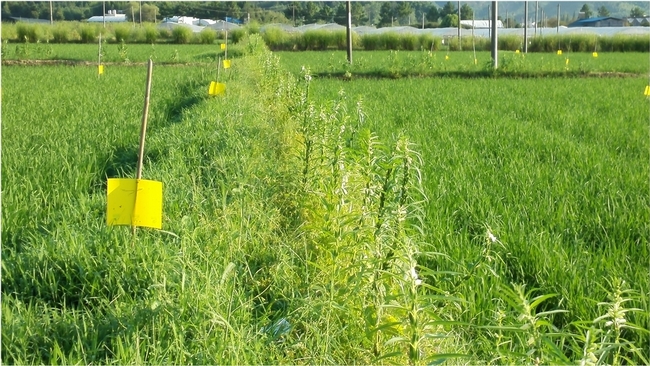
- Author: Kathy Keatley Garvey
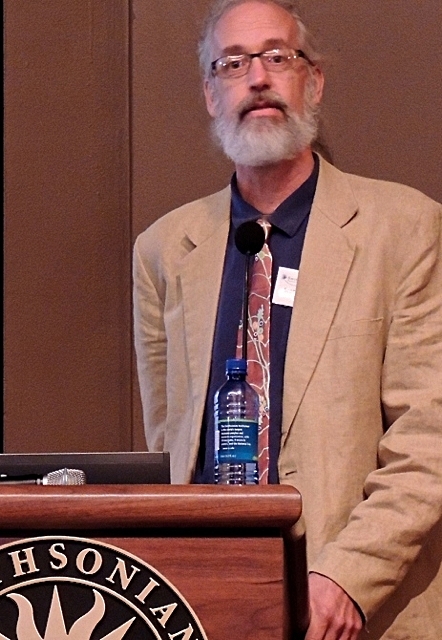
When the United Nations meets Sept. 21 in New York, they want the UN to reframe its action on the global antimicrobial drug resistance (AMR) crisis.
It's crucial. How crucial is it?
Antimicrobial drug resistance threatens both personal and planetary health and the issue is as crucial as the global threat of climate change, Carroll says.
In a paper titled “Use Antimicrobials Wisely,” published in the current edition of Nature, a nine-member international research team, including Carroll, explained their advocacy.
“We're concerned about what will happen if the proposed UN solutions focus mainly on incentives for new drug development, at a time when the drug industry itself is abandoning those efforts against infectious disease due to AMR,” said Carroll, who co-leads the international group on resistance to pesticides and antimicrobial drugs. He founded and directs the Institute for Contemporary Evolution, Davis, and is affiliated with the Sharon Lawler lab, UC Davis Department of Entomology and Nematology.
The paper, published in the Comment section, is the first product from a two-year working group sponsored by the National Socio-Environmental Synthesis Center in Annapolis, Md. “We are taking a similar socio-environmental approach in our concurrent work on pesticide stewardship,” Carroll said.
“While new drugs have a role, we think it's more important for society to learn how to steward pathogen susceptibility, so we develop that theme in the paper,” Carroll said. “And because we also depend on microbes for digestion, immunity, and general health, and microbes support ecosystem functioning through nutrient cycles and the maintenance of soil and water quality, we further argue that our AM drug habits and waste streams threaten both personal and planetary health. “
Lead authors of the paper are Peter Jorgensen of Stockholm, Sweden, and Didier Wernli of Geneva Switzerland. Jørgensen, who spent part of his Danish graduate program working with Carroll in Davis, is now a postdoctoral researcher at the Royal Swedish Academy of Science, Stockholm.
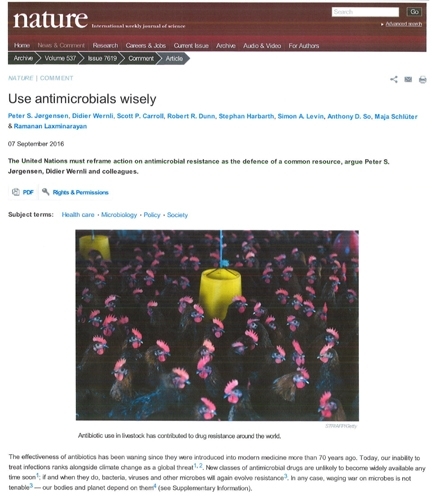
Carroll described AMR as more than a medical dilemma—it's a socio-ecological problem. “The vulnerability of pathogens to antimicrobial drugs is a communal resource, readily threatened by overuse, to be lost as a classic 'tragedy of the commons.' There is a lot of contemporary theory for social resilience in the face of socio-ecological challenges, and– linking to entomology– the early success of the pioneering management of Bt crop pest resistance evolution is an encouraging precedent.”
In its planetary health approach, the group seeks to be “more cognizant not only of preserving drug susceptibility in pathogenic microbes, but also protecting from wholesale destruction the community of microbes on which we depend for life,” Carroll said.
In the paper, the scientists pointed out that “Resistance affects animal and environmental health as well as human health, and so requires coordinated action across economic sectors. No single concern exemplifies this better than the high rate of antibiotic use in agriculture (largely as growth promoters or disease prevention).” They wrote that in the United States, 70 to 80 percent of all anti-microbials consumed are given to livestock.
An example of antimicrobial resistance involves the malaria mosquito, Anopheles gambiae. The World Health Organization (WHO) in a document, "Global Action Plan on Anti-Microbial Resistance," wrote:
"Antimicrobial resistance can affect all patients and families. Some of the commonest childhood diseases in developing countries – malaria, pneumonia, other respiratory infections, and dysentery – can no longer be cured with many older antibiotics or medicines. In lower- income countries, effective and accessible antibiotics are crucial for saving the lives of children who have those diseases, as well as other conditions such as bacterial blood infections. In all countries, some routine surgical operations and cancer chemotherapy will become less safe without effective antibiotics to protect against infections."
Expect to hear more about this alarming crisis--the global antimicrobial drug resistance crisis. Meanwhile, read the WHO Global Action Plan.

- Author: Kathy Keatley Garvey

The mosquito-borne viral disease known as “breakbone fever,” is three times more prevalent than originally thought, according to a research paper published today in Nature and co-authored by dengue expert Thomas Scott of UC Davis.
In their research paper, titled “The Global Distribution and Burden of Dengue,” Scott and the 17 other team members estimated that 350 million people are infected each year--more than triple the World Health Organization’s current estimate of 50 to 100 million.
Professor Simon Hay of the University of Oxford led the research as part of the International Research Consortium on Dengue Risk Assessment, Management and Surveillance.
“Dengue takes an enormous toll on human health worldwide, with as many as 4 billion people at risk," said Scott, a UC Davis professor of entomology and worldwide expert on the epidemiology and prevention of dengue. He chairs the mosquito-borne disease modelling group in the Research and Policy for Infectious Disease Dynamics (RAPIDD) program of the Science and Technology Directory, Department of Homeland Security, Fogarty International Center, National Institutes of Health.
“The results of our study and infrastructure that created the dengue maps fill a critical gap in the battle against dengue,” said Scott, who maintains field research programs in Iquitos, Peru, and Khamphaeng Phet, Thailand. “Prior to this, without rigorously derived dengue estimates that can be continuously updated, it was not possible to know with confidence where and when to direct interventions for greatest potential impact or to objectively assess the effectiveness of regional and global control efforts. That kind of knowledge was among the most important missing information for developing enhanced dengue prevention programs.”

The highly infectious tropical and subtropical disease is spread by the bite of an infected female Aedes aegypti, a day-biting, limited flight-range mosquito that prefers human blood to develop its eggs. Dengue is caused by four distinct, but closely related, viruses. The most severe form of disease is life-threatening dengue hemorrhagic fever or DHF.
The researchers assembled known records of dengue occurrence worldwide and used a formal modelling framework to map the global distribution of dengue risk. They then paired the resulting risk map with detailed longitudinal information from dengue cohort studies and population surfaces to infer the public health burden of dengue in 2010.
“There are currently no licensed vaccines or specific therapeutics, and substantial vector control efforts have not stopped its rapid emergence and global spread,” the researchers wrote.
Dengue has now begun to appear along the southern border of the United States, including Texas. Florida has also reported cases of dengue.
Of the 96 million clinically apparent dengue infections, Asia bears 70 percent of the burden, the research paper revealed. India alone accounts for around one-third of all infections.


- Author: Kathy Keatley Garvey
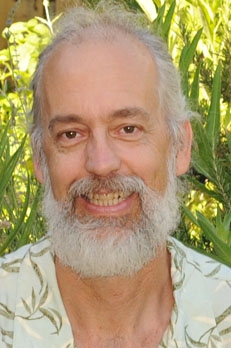
That they're Public Enemy No. 1?
According to a recent Nature journal essay, non-natives are so vilified today that a “pervasive bias” exists against non-native species, a bias embraced by “the public, conservationists, and managers and policy-makers, as well by as many scientists, throughout the world.”
The native-vs.-non-native species distinction appears to be the “guiding principle” in today’s conservation and restoration management, say 19 ecologists in their essay, “Don’t Judge Species on Their Origins.”
Mark Davis, a biology professor at Macalester College, St. Paul, Minn., is the lead author. The other co-authors include Scott Carroll of UC Davis.
Carroll, an ecologist in professor Sharon Lawler’s lab, and the founding director of the Davis-based Institute for Contemporary Evolution, contributed his work on conciliation biology to the thought-provoking essay. He holds a doctorate in biology from the University of Utah.
“Global change alters conditions for all species, and from a practical perspective, origin can be only one of many criteria we consider,” Carroll told us. “Appraising non-native organisms more openly invites us to more seriously contemplate our aims when managing novel communities of mixed origin.”
Carroll is often out chasing soapberry bugs (a key research interest), writing research papers and delivering presentations. He considers soapberry bugs "wondrous examples of evolution happening right now--as we change the world, these beautiful insects are quickly adapting, and in the process directly revealing how evolution works."
You can't miss his presence. At 6 foot-10 inches, he towers over his colleagues.
And the soapberry bugs!
Related Links:
Department of Entomology website
Conciliation Biology: the Eco-Evolutionary Management of Permanently Invaded Biotic Systems by Scott Carroll, published in 2011 in Evolutionary Applications.
Soapberry Bugs of the World Website (Scott Carroll)
Scott Carroll Website
Scott Carroll: Curriculum Vitae
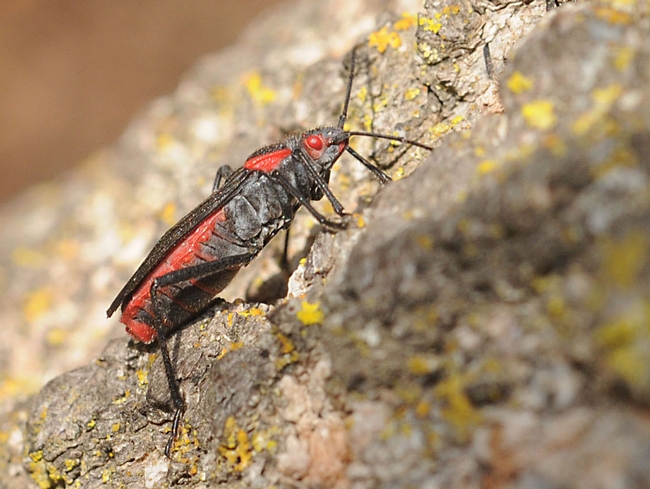
- Author: Kathy Keatley Garvey
It's a killer, pure and simple.
But the issue is as complex as it comes.
The malaria mosquito, from the genus Anopheles, infects some 350 to 500 million people a year, killing more than a million. Most are young children in sub-Saharan Africa.
Female mosquitoes “bite” because they require a blood meal to develop their eggs. They detect their prey via olfactory receptor neurons found on their antennae, the insect equivalent to the human “nose.”
When Anopheline mosquitoes are infected with a parasite that causes malaria, the insect-host transmission occurs. The result: a deadly killer.
Identifying exactly how malaria mosquitoes detect their human prey is crucial to developing strategies for mosquito control, says chemical ecologist Walter Leal, professor of entomology at the University of California, Davis.
Leal, recently asked to write a "News-and-Views" piece on a Yale-Vanderbilt study for the international science journal, Nature, did so eloquently in its March 4th edition. He praised the scientific report as a “milestone discovery in our understanding of the malaria mosquito’s sense of smell.”
In the article, headlined "The Treacherous Scent of a Human," Leal zeroes in the widespread threat of malaria, a disease that threatens half of the world’s population. It's "an accessory to the deaths of about one million humans every year,” Leal wrote. “Globally, the number of people who get malaria each year is greater than the population of the United States.”That's putting a number on the numbers.
The Yale-Vanderbilt team, headed by John Carlson of the Yale Department of Molecular, Cellular and Developmental Biology, examined 79 of the malaria mosquito’s odorant receptors, finding that some are well-tuned to detect specific human odors and others aren’t. Certain odorants activate some receptors but inhibit others, according to their comprehensive study published March 4 in Nature.
Indeed. The Leal lab back in 2008 published groundbreaking research that revealed the secret mode of the insect repellent, DEET. The scent doesn't jam the insect senses and it doesn't mask the smell of the host, as scientists previously thought. Mosquitoes avoid it because it smells bad to them.
Leal advocates more molecular studies in the war against malaria and other mosquito-borne diseases. But that research can't stand alone. As he succinctly points out: “The development of effective malaria control will require a multidisciplinary approach that includes, but is not limited to, improvements to social infrastructure in countries affected by disease, vaccination programs and vector management.”
New mosquito attractants or repellents, he says, could be developed through reverse chemical ecology, determining which odorant attracts and which repels.Mosquitoes don't like the scent of DEET. What else do they NOT like?
The study, as Leal correctly observes, "offers a fresh strategy for controlling the unwitting accessories to one of the world’s most prolific killers.”
